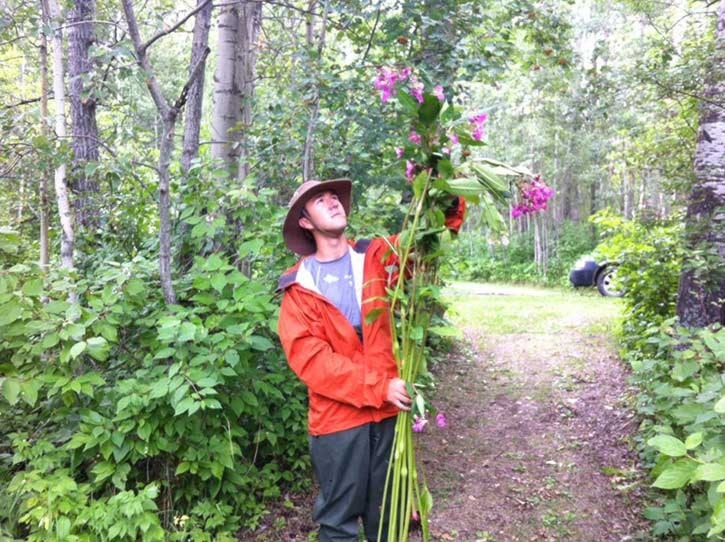After six years of painstaking dedication the areas along the north and west shores of Pigeon Lake are almost completely free of the prohibited noxious weed Himalayan balsam.
Eradication program co-ordinator Don Davidson says the Himalayan balsam was introduced to a Pigeon Lake garden in the 1990s and it still poses an international issue.
Davidson says 10 years ago people in the community noticed a “beautiful plant” that started growing along the north shore of the lake and spread to the west. “Soon the shoreline was covered with these pink flowers.”
“They love the wet conditions,” he added.
However, once they realized it was a prohibited noxious weed an eradication program was developed and Davidson volunteered to spearhead the efforts. “We got funding from the Land Stewardship Centre.”
Each summer the infected lands are patrolled bi-weekly and the developed pick, break, drop protocol is used to kill off the weed's population.
Davidson says literature he looked at to deal with the weed encourages bagging the plants and disposing of it in a landfill. However, the Pigeon Lake program did not have enough manpower to bag all the plants and Davidson was concerned it would only transport the seeds to a new location.
“The protocol we developed at Pigeon Lake is pick, break and drop. When you break it no water gets to the flowering end and it dies very quickly.” said Davidson. He explained as long as the roots are not dropped in wet soil and the plants are not piled together they should not take hold again.
Himalayan balsam grows from the beginning of July until the frost kills them in the fall. Davidson says the plant usually grows to be three to four feet tall but can get as high as eight feet. “The plant is easy to identify, the flower looks like a snap dragon.”
Bees are heavily attracted to the plant and the seed pods can launch the seeds up to 10 feet away using a spring system, says Davidson. “When the pods ripen and you touch the pods the spring recoils.”
Each plant can produce between 1,000 and 5,000 seeds.
Davidson says seeds can lay dormant for about one year before growing but through the program patrols are finding only patches of 10 rather than 10,000. “It's under control and it will soon be eradicated.”
While the shorelines are almost clear Davidson says the plant could still be lurking on people's property and he encourages them to keep an eye out and pick and break any straggling weeds they find.
